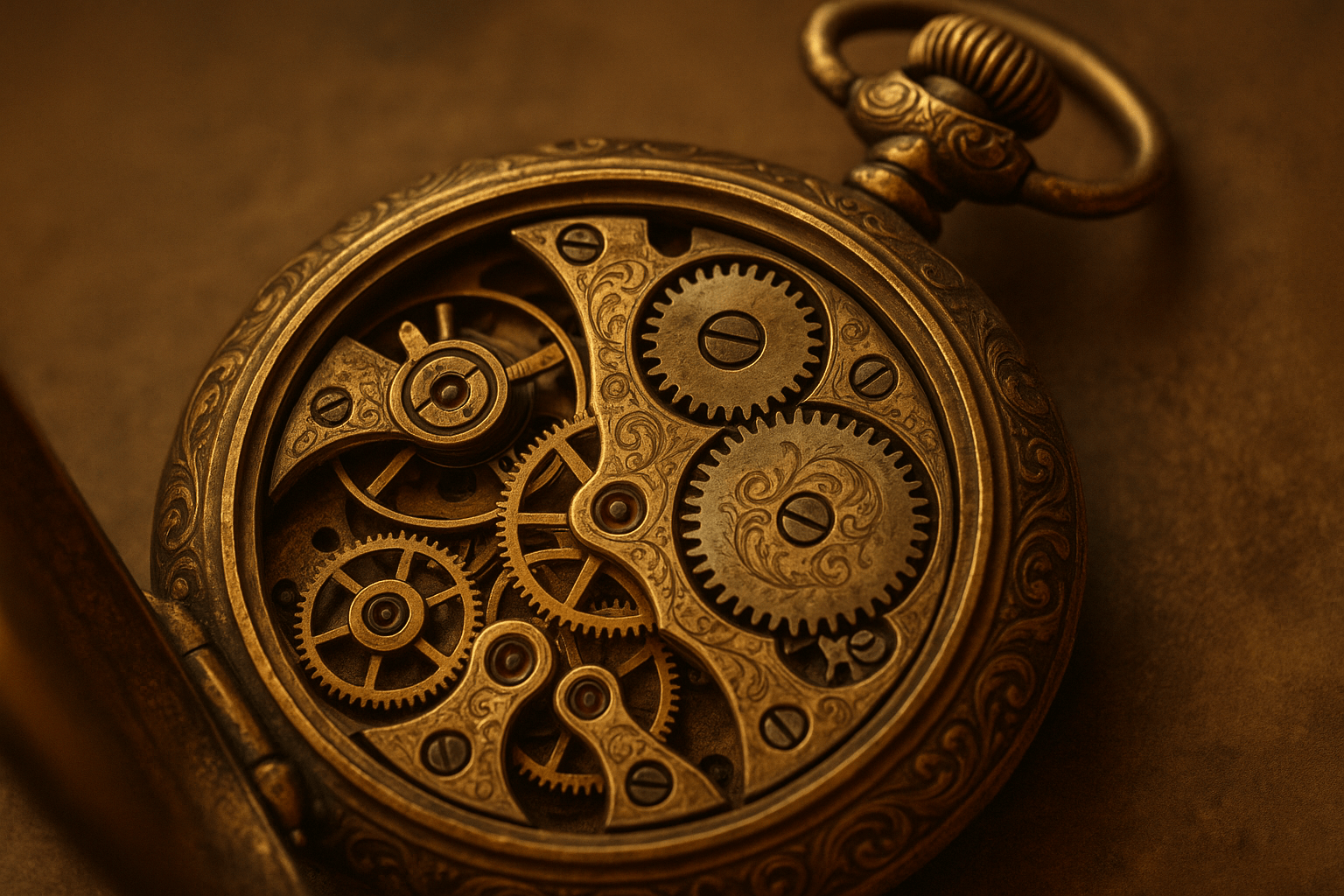The First Tick: From Clocks to Pockets
The story of the pocket watch begins in the early 16th century, in the bustling craft centers of Germany. The critical innovation wasn’t a new way to measure time, but a new way to power it. For centuries, clocks had been driven by weights, making them large and immobile. The invention of the mainspring—a tightly coiled strip of metal that stored and released energy—allowed clockmakers to dramatically shrink their mechanisms.
Peter Henlein, a locksmith and clockmaker from Nuremberg, is widely credited with creating some of the first portable timepieces around 1510. These were not the sleek, flat discs we imagine today. They were bulky, drum- or sphere-shaped brass contraptions, often worn as pendants around the neck. Dubbed “Nuremberg eggs” (a possible corruption of the German word for little clock, Uhrlein), they were magnificent novelties for the ultra-wealthy. However, as practical timekeepers, they were abysmal. With only an hour hand and a tendency to gain or lose several hours a day, they were more a symbol of status than a tool of precision.
An Accessory for the Aristocracy
Throughout the 17th and 18th centuries, the “clock-watch” evolved. It was King Charles II of England who, around 1675, popularized the trend of carrying a watch in a small pocket of his waistcoat. Thus, the “pocket watch” was born. This shift in fashion drove a change in design, with watches becoming flatter and more rounded to avoid snagging on fabric.
This era also saw monumental leaps in accuracy. The invention of the balance spring in the 1670s (a development contested between scientist Robert Hooke and physicist Christiaan Huygens) acted as the regulating organ of the watch, dramatically improving its precision. Suddenly, watches were reliable enough to sport a minute hand, and eventually, a second hand. Watchmaking became a high art, with centers of excellence emerging in England, France, and Switzerland. The cases became canvases for exquisite engraving, enamel painting, and jewel-setting. For the aristocracy, a pocket watch wasn’t just for telling time; it was a statement of wealth, taste, and intellectual sophistication.
The Age of Precision: Time for the Masses
The Industrial Revolution of the 19th century transformed time from an abstract concept into a valuable commodity. Factory whistles, train schedules, and regimented workdays required a newly synchronized populace. The ornate, custom-made watch of the European elite was wholly unsuited for this new world. The future of timekeeping would be forged not in the exclusive workshops of Geneva, but in the factories of a new industrial power: the United States.
Pioneers like Aaron Lufkin Dennison of the Waltham Watch Company envisioned a new way to build watches. Applying the “American System of Manufacturing”, they used machine-made, interchangeable parts. This process allowed for the mass production of reliable, affordable timepieces. Companies like Waltham, Elgin, and later, Robert H. Ingersoll, began churning out watches by the millions. Ingersoll’s famous “dollar watch,” introduced in the 1890s, was a marvel of accessible technology, finally putting personal time within reach of the common worker.
Synchronizing a Nation: The Railroad Standard
Nowhere was the need for precise, synchronized time more critical than on the burgeoning American railroad network. In a system running on single tracks, timing was a matter of life and death. This brutal reality was made clear on April 19, 1891, in Kipton, Ohio. A head-on collision between two trains killed eight people, with the subsequent investigation revealing that one of the engineers’ watches had stopped for four minutes and then restarted, leading to the fatal miscalculation.
This disaster spurred the railroad industry into action. They commissioned Webb C. Ball, a Cleveland watchmaker, to establish a rigorous set of standards for all timepieces used by railroad employees. This gave birth to the “Railroad Grade” pocket watch, the pinnacle of mechanical timekeeping.
To be certified as Railroad Standard, a watch had to meet demanding specifications:
- Be accurate to within 30 seconds per week.
- Have a minimum of 17 jewels (to reduce friction on moving parts).
- Be adjusted to keep time in at least five different physical positions.
- Be able to compensate for temperature changes.
- Feature a bold, legible dial with Arabic numerals and a lever-set mechanism to prevent the time from being accidentally changed.
These watches didn’t just prevent accidents; they synchronized the nation. The railroads, with their standardized watches, were instrumental in establishing the four continental time zones in 1883, creating the unified temporal landscape we take for granted today. The pocket watch had evolved from a nobleman’s toy into the instrument that kept America’s heart beating in unison.
The Twilight of the Pocket Watch
The pocket watch’s reign, however, was destined to end. As the 20th century dawned, a new kind of war demanded a new kind of timepiece. In the trenches of World War I, fumbling for a watch in a pocket was impractical and dangerous. Soldiers began strapping their watches to their wrists, giving rise to the “trench watch” and popularizing what would become the wristwatch.
After the war, the convenience and swagger of the wristwatch won the day. The pocket watch, once a symbol of modernity and progress, slowly receded into the realm of formal wear, nostalgia, and classic craftsmanship. Though no longer a daily necessity, its legacy is imprinted on our modern world—in our synchronized schedules, our globalized economy, and our deep-seated sense that time is something personal, precious, and always ticking forward.
